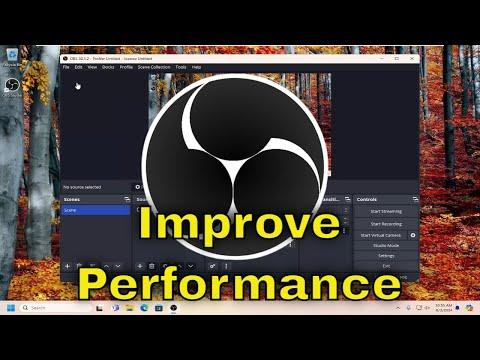I remember the first time I encountered serious lag issues with OBS Studio. I had just started streaming my gameplay, eager to share my gaming experiences with others. Everything was going smoothly until I noticed that my stream was choppy and unwatchable. The frustration of seeing my well-planned broadcasts crumble in front of my eyes was overwhelming. I had invested a lot of time and effort into setting up my stream, but the performance issues seemed insurmountable. Determined to fix it, I decided to delve into the world of optimization and find a solution.
My initial approach was to check the settings in OBS Studio. The default settings are often not tailored for everyone’s specific hardware setup. I discovered that OBS Studio has a plethora of settings that can be adjusted to balance performance and visual quality. I began with the most common recommendations: adjusting the resolution and frame rate. I experimented with lowering the output resolution from 1080p to 720p and reducing the frame rate from 60 FPS to 30 FPS. This simple adjustment made a noticeable difference in the smoothness of my stream.
Next, I turned my attention to the encoding settings. OBS Studio allows you to choose between different encoders, such as x264 and hardware encoders like NVENC or AMD VCE. I was using the x264 encoder, which relies heavily on the CPU. I switched to NVENC, which leverages the GPU for encoding. This shift offloaded the encoding task from my CPU to my GPU, which was much better suited for this purpose. The performance improvements were substantial. The lag issues were reduced, and the stream quality was still acceptable.
I also looked into the bitrate settings. The bitrate is crucial because it affects both the quality and stability of your stream. Setting it too high can cause issues if your internet connection can’t handle it. I adjusted the bitrate according to my internet upload speed. To find the optimal bitrate, I used online calculators and tests to ensure I was not pushing my network beyond its limits. I found that a bitrate of 3000-6000 kbps worked well for my setup.
Another significant factor was the output format. OBS Studio allows you to choose between different output formats, such as FLV and MKV. I opted for MKV, which is less prone to corruption and can be easily converted to other formats if needed. Additionally, MKV files are often smaller and less taxing on system resources during recording.
I also revisited the settings related to scene complexity. Having too many sources or scenes in OBS can be demanding on your system. I streamlined my scenes and sources, removing any that were unnecessary or redundant. This cleanup not only helped in reducing the lag but also made my streaming setup more manageable.
Additionally, I optimized my system settings. I made sure that my GPU drivers were up to date and that no background applications were consuming excessive resources. I also allocated more CPU priority to OBS Studio through the Task Manager, which gave OBS Studio more of the system’s processing power. This was done by right-clicking on the OBS Studio process in the Task Manager and setting its priority to ‘High’.
To ensure that my system was running at its best, I performed regular maintenance tasks such as disk cleanup and defragmentation. Keeping my system free from unnecessary files and ensuring that my drives were in good shape contributed to overall performance improvements.
Finally, I monitored my system’s performance using tools like Task Manager and MSI Afterburner. These tools allowed me to keep an eye on CPU, GPU, and memory usage while streaming. By analyzing this data, I was able to identify and address any performance bottlenecks in real-time.
Through a combination of adjusting OBS Studio settings, optimizing my system, and monitoring performance, I managed to significantly reduce lag and improve the overall quality of my stream. It took some trial and error, but each tweak and adjustment brought me closer to the ultimate goal of a smooth, professional-looking stream. By methodically addressing each aspect of the setup, I transformed my streaming experience from frustrating to enjoyable, ensuring that my broadcasts were both high-quality and lag-free.
